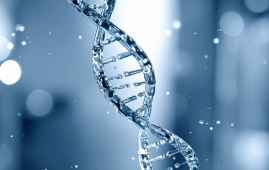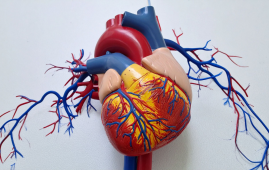

In 6-week-old newborns at risk for autism, unique patterns of brain connectivity were discovered in a recent study. Variations in the Salience Network, which is in charge of sifting significant stimuli, could foretell subsequent social and sensory activities.
At age one, infants with higher social connections showed better-shared attention, whereas those with stronger sensory connections displayed sensory over-reactivity. Autism’s abnormal sensory processing and diminished social attention may be explained by early brain processes.
Important Information:
Brain abnormalities appear before autistic behaviors are noticeable.
At one year old, sensory and social behaviors are predicted by Salience Network connectivity.
Autism’s abnormal sensory processing and diminished social attention may be explained by early brain processes.
UCLA is the source.
Six-week-old newborns at risk of developing autism spectrum disorder (ASD) had different brain connectivity patterns, according to a study co-led by UCLA Health researchers.
Important Information:
Brain abnormalities appear before autistic behaviors are noticeable.
At one year old, sensory and social behaviors are predicted by Salience Network connectivity.
Autism’s abnormal sensory processing and diminished social attention may be explained by early brain processes.
According to the authors, their research shows that variations in brain responses probably appear long before behaviors associated with ASD can be recognized. It also suggests that these brain patterns might influence the brain changes that normally govern social development, which could result in the emergence of ASD-related behaviors.
The findings were released in the Communications Biology journal.
The study examined 53 newborns prospectively; 24 of them had an increased risk of developing ASD since at least one older sibling had been diagnosed with the disease, whereas 29 of them had no family history of ASD or other developmental abnormalities.
Previous studies have indicated that infants who have an ASD sibling have a 20% chance of also having ASD.
The Salience Network, a group of brain areas that collaborate to identify and categorize significant environmental cues and adjust attention accordingly, was the subject of the study. The network is essential for determining which stimuli require attention and for triggering the right reactions.
The Salience Network and sensorimotor brain regions—regions involved in processing movement and sensory data—were shown to have higher connections in high-probability infants.
The Salience Network and prefrontal regions—which are essential for social attention and interactions—showed higher connections in children with a usual risk of developing ASD.
Furthermore, babies with higher connectivity to sensorimotor regions also had lower connectivity to prefrontal regions, indicating that socially relevant information may be neglected in favor of fundamental sensory information.
Significantly, conduct at one year old was predicted by these early brain characteristics observed at six weeks of age. increased connectivity with sensory regions in infants resulted in increased sensory over-reactivity at age one. Autism is a prevalent disorder that impairs individuals’ ability to respond appropriately to normal ambient sounds or sensations.
The ability to share attention with others, which is a crucial step towards the development of social and communication abilities that are frequently compromised in autism, was demonstrated better by infants who had more connectivity with social attention areas at the age of one.
According to the authors, the abnormal sensory processing and decreased social attention that is frequently observed in ASD may be explained by these early brain connection patterns.
“Although our modest sample size and the single timepoint for evaluating Salience Network connectivity are limitations in the current study, the overall results strongly suggest that atypical patterns of Salience Network connectivity may reflect a developmental vulnerability,” they write.
“This is a possibility that should be examined in large-scale longitudinal studies that heavily sample brain and behavioral measures during the first postnatal years.”
“An emerging theory in autism research is that differences in sensory processing may precede the more classic social and communication symptoms of autism, and this data supports that theory in showing that very early brain differences related to how attention is allocated may predict both sensory and social behaviors in toddlers,” said Shulamite Green, Ph.D., assistant professor at the David Geffen School of Medicine at UCLA and corresponding author.
“In other words, more attention to extraneous sensory stimuli in the environment could make it difficult to attend to social cues, and this difference in attention could affect how the brain develops across the first year of life and beyond.”
“What I find compelling about these converging findings in such young babies is that they provide both a mechanistic and theoretical account for the lack of the typical attentional biases for social stimuli seen in older infants and toddlers who later receive an ASD diagnosis,” added Mirella Dapretto, Ph.D., co-author and associate director of the Semel Institute for Neuroscience and Human Behavior.
For more information: Salience network connectivity is altered in 6-week-old infants at heightened likelihood for developing autism, Nature, https://doi.org/10.1038/s42003-024-06016-9
more recommended stories
 Intensive mind-body retreat rapidly alters brain function
Intensive mind-body retreat rapidly alters brain functionAn intensive mind-body retreat combining meditation,.
 Citrus and Grape Compounds Help Prevent Type 2 Diabetes
Citrus and Grape Compounds Help Prevent Type 2 DiabetesA new clinical trial highlights the.
 Personalized Pain Care Transforms Parkinson’s Treatment
Personalized Pain Care Transforms Parkinson’s TreatmentNew UniSA research underscores the urgent.
 Genetic Diversity Explains Obesity Risk Differences
Genetic Diversity Explains Obesity Risk DifferencesCross-ancestry Study Identifies Novel Obesity Genes.
 Meniscal Tear and OA Pain Improved by Home Exercise
Meniscal Tear and OA Pain Improved by Home ExerciseHome Exercise Proves Effective for Knee.
 AI ECG Model Outperforms Standard STEMI Triage
AI ECG Model Outperforms Standard STEMI TriageNovel AI ECG Model Outperforms Standard.
 New Software Transforms Real-Time Pathogen Surveillance
New Software Transforms Real-Time Pathogen SurveillanceReal-Time Pathogen Surveillance Software Transforms Environmental.
 Bright Nights May Increase Stroke, Heart Failures in Adults
Bright Nights May Increase Stroke, Heart Failures in AdultsBright Nights are tied to increased.
 Cannabis Use Linked to Regular Tobacco in US Youth
Cannabis Use Linked to Regular Tobacco in US YouthCannabis Use and Tobacco Risk: A.
 Mediterranean Diet Reduces Endometriosis Risk in Women
Mediterranean Diet Reduces Endometriosis Risk in WomenMediterranean Diet and Endometriosis: A Promising.

Leave a Comment